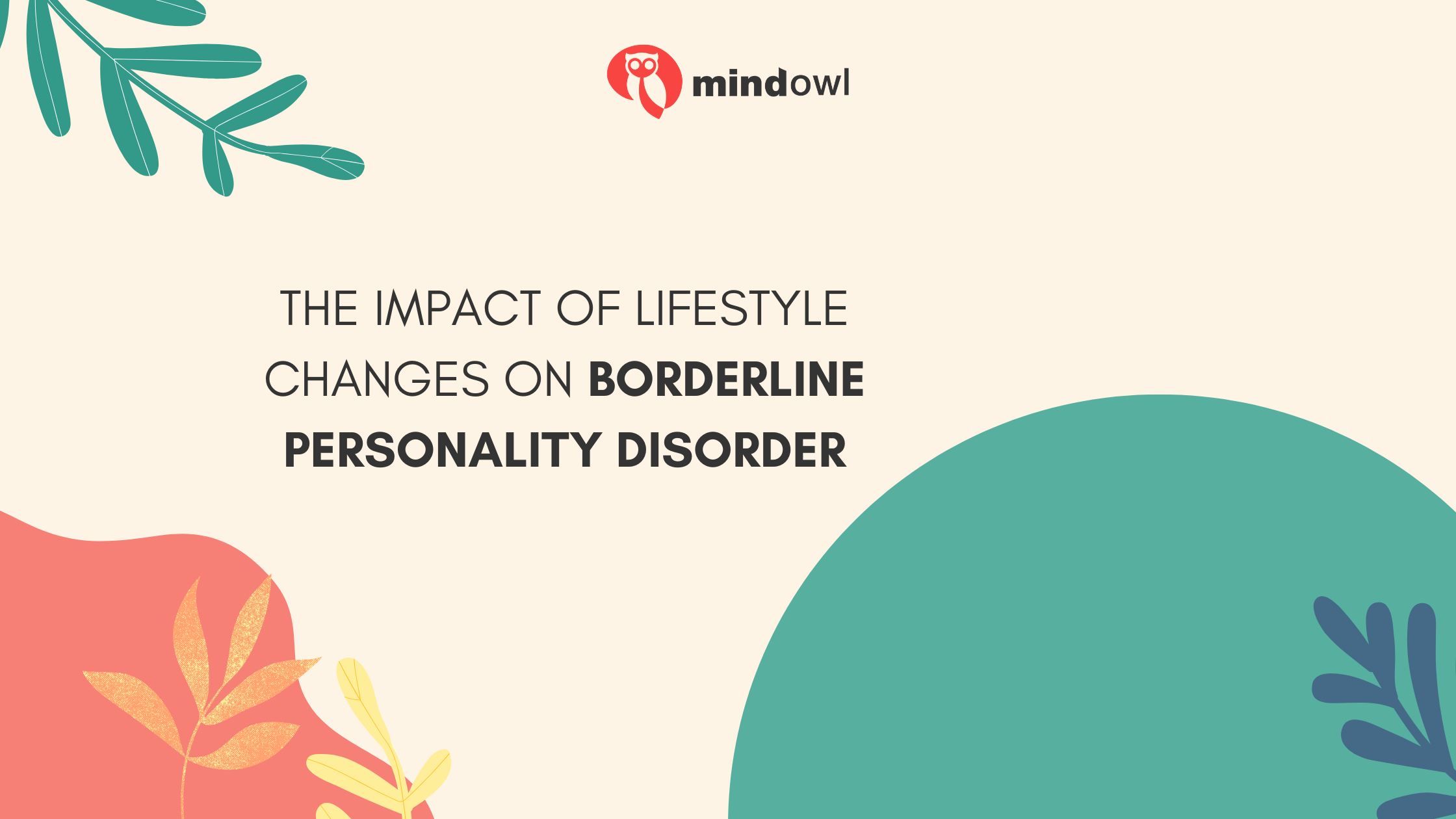
Living with Borderline Personality Disorder can feel like riding an emotional roller coaster every single day.
Here’s the thing…
Traditional therapy and medication are important. But what if I told you that simple lifestyle changes could make a massive difference in how you feel?
Most people don’t realize that what they eat, how they sleep, and when they exercise can completely transform their BPD symptoms. You can start implementing these changes today without spending a fortune.
What you’ll discover:
- Why Your Daily Habits Matter More Than You Think
- The Simple Food Swaps That Stabilize Your Mood
- How Moving Your Body Changes Your Brain
- Sleep Strategies That Actually Work
- Building Structure Without Feeling Trapped
Why Your Daily Habits Matter More Than You Think
1.4% of adults in the U.S. have BPD. That’s millions of people struggling with intense emotions, unstable relationships, and feeling like they’re constantly walking on eggshells.
But here’s what most people don’t know…
Your brain with BPD is already working overtime. Every emotion feels amplified. Every relationship feels like it could explode at any moment. When you’re not taking care of your basic needs, you’re essentially adding fuel to an already raging fire.
Think about it this way. If you’re running on three hours of sleep, eating nothing but junk food, and spending all day on the couch, how do you expect to handle emotional triggers?
The truth is this:
People who are looking for Relief from Borderline Personality Disorder? often overlook the power of lifestyle changes. They think they need expensive therapy or complicated treatments. While professional help is crucial, lifestyle changes can be your secret weapon.
Your body and mind are connected in ways you probably don’t even realize. When you start treating your body better, your mind follows. It’s not magic — it’s science.
The Simple Food Swaps That Stabilize Your Mood
Want to know something that might surprise you?
What you eat directly affects how stable your emotions are throughout the day. Most people with BPD experience intense mood swings that can last hours or even days.
Here’s what happens:
When you eat processed foods, sugar, and caffeine, your blood sugar spikes and crashes. Each crash triggers stress hormones that make emotional regulation even harder.
But when you eat whole foods, lean proteins, and healthy fats, your blood sugar stays stable. This means your emotions have a better chance of staying stable too.
Some simple swaps that can make a huge difference:
Instead of sugary cereals, try oatmeal with berries and nuts.
Instead of energy drinks, drink green tea or water with lemon.
Instead of fast food, prepare simple meals with vegetables, lean protein, and whole grains.
The key is consistency. You don’t need to eat perfectly, but eating regularly will help your emotional regulation improve dramatically.
How Moving Your Body Changes Your Brain
Let me tell you something most people don’t realize…
Exercise isn’t just about looking good or losing weight. For people with BPD, movement is literally medicine for your brain.
Here’s why:
When you exercise, your brain releases endorphins — natural mood stabilizers. Regular physical activity also increases BDNF (brain-derived neurotrophic factor), which helps your brain build new neural pathways. This means you’re literally rewiring your brain to handle emotions better.
Nearly 75% of people with BPD are women, and many struggle with body image issues. The good news? You don’t need intense workouts to see benefits.
Even a 20-minute walk can reduce anxiety and improve your mood for hours. Yoga combines movement with mindfulness, which is perfect for BPD symptoms.
The secret is starting small.
Don’t try to go from zero to marathon runner in a week. Instead, commit to moving your body for just 10 minutes a day.
Your brain will thank you for it.
Sleep Strategies That Actually Work
Sleep problems and BPD go hand in hand. When you’re not sleeping well, everything else falls apart. Your emotional regulation gets worse. Your relationships suffer.
But here’s the problem:
Most sleep advice is written for people without BPD. It doesn’t take into account the racing thoughts, the emotional intensity, or the fear of being alone with your thoughts at night.
So what actually works?
Create a wind-down routine that starts 2 hours before bed. Turn off screens, dim the lights, and do something calming like reading or gentle stretches.
Keep your bedroom cool, dark, and quiet. Your brain needs these conditions to produce melatonin naturally.
If your mind races at night, try the “brain dump” technique. Keep a notebook by your bed and write down everything you’re thinking about.
Avoid caffeine after 2 PM. Caffeine can stay in your system for 6-8 hours.
Good sleep won’t cure BPD, but it will make everything else more manageable.
Building Structure Without Feeling Trapped
Here’s something that might seem contradictory…
People with BPD often crave structure but also rebel against it. You want routine, but you also want freedom.
The solution?
Flexible structure. This means having certain non-negotiables in your day while leaving room for spontaneity.
Your non-negotiables might include:
- Eating three meals a day
- Getting 7-8 hours of sleep
- Moving your body for at least 20 minutes
- Taking any prescribed medications
Everything else can be flexible. Maybe Monday you go for a walk, Tuesday you do yoga, and Wednesday you dance in your living room.
This approach works because:
It gives your brain the predictability it needs to feel safe while honoring your need for autonomy.
The Research That Changes Everything
Want to know something encouraging?
40% to 50% of people with BPD no longer meet the criteria for diagnosis after just two years of proper treatment and lifestyle changes.
This means BPD isn’t a life sentence. It’s a condition that can improve dramatically with the right approach.
The research is clear: people who combine therapy with lifestyle changes see faster improvements than those who rely on therapy alone.
Taking Action Without Overwhelming Yourself
Here’s the thing about lifestyle changes:
They only work if you can actually stick with them. The biggest mistake people make is trying to change everything at once.
Instead, pick one area to focus on for the next 30 days. Maybe it’s eating three regular meals a day. Maybe it’s going to bed at the same time every night.
Once that feels automatic, add another change.
Remember:
You’re not trying to be perfect. You’re trying to be consistent.
Wrapping This Up
Lifestyle changes won’t cure BPD, but they can make a massive difference in how you feel day to day. When you take care of your basic needs — eating well, sleeping enough, moving your body, and creating structure — you’re giving your brain the best possible chance to regulate emotions effectively.
The key is starting small and being consistent.
You don’t need to overhaul your entire life overnight. Pick one area to focus on, stick with it for 30 days, and then add another change.
Remember:
Recovery from BPD is possible. With the right combination of professional help and lifestyle changes, you can live a fulfilling life.
Every step you take toward better self-care is a step toward a more stable, happier you.
MindOwl Founder – My own struggles in life have led me to this path of understanding the human condition. I graduated with a bachelor’s degree in philosophy before completing a master’s degree in psychology at Regent’s University London. I then completed a postgraduate diploma in philosophical counselling before being trained in ACT (Acceptance and commitment therapy).
I’ve spent the last eight years studying the encounter of meditative practices with modern psychology.

